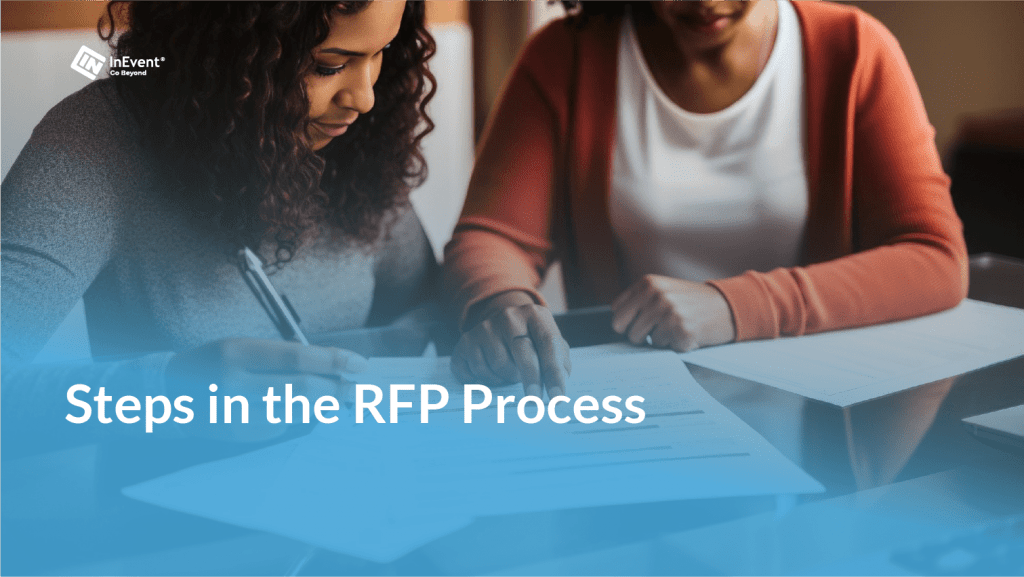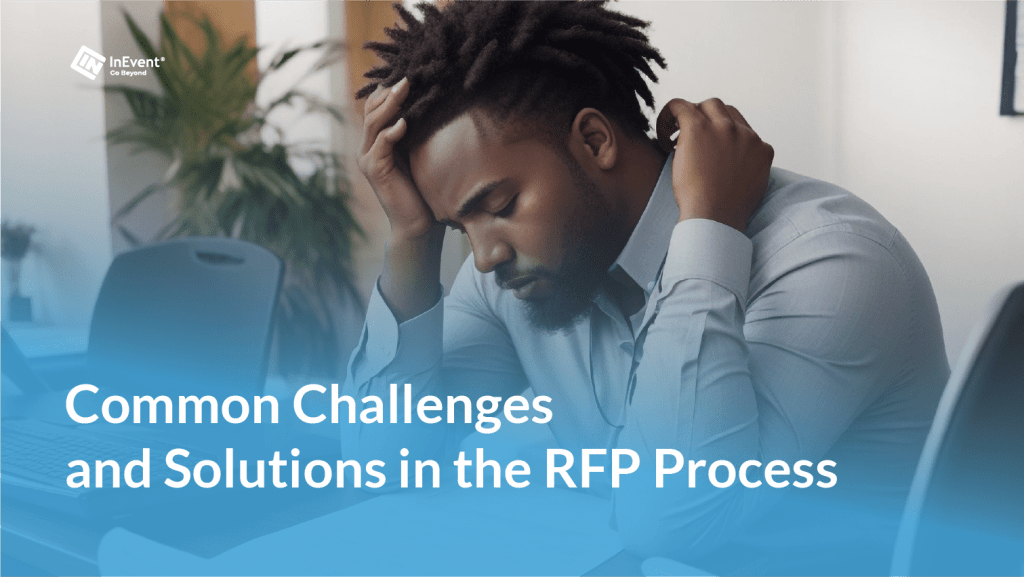What Is a Request for Proposal (RFP)?
When it comes to sourcing services or products, whether in general business, government procurement, or specifically in event planning, understanding and creating a Request for Proposal (RFP) is crucial. An RFP is more than just a document; it’s a strategic tool used in making informed decisions. It outlines the needs of an organization and asks potential suppliers or service providers to propose solutions and bid for the job.
In this blog post, we’ll dive into what a Request for Proposal truly entails, its key components, and how to craft one effectively, with a special focus on the field of event planning. Whether you’re a business owner, a procurement manager, or an event planner, understanding how to navigate and utilize RFPs can significantly impact the success of your projects and events.
Definition of a Request for Proposal (RFP)
A Request for Proposal (RFP) is a formal document used by organizations to solicit proposals from potential suppliers or service providers. It serves as a bridge between a company’s specific needs and the solutions offered by vendors. Unlike a Request for Information (RFI) that seeks general information or a Request for Quotation (RFQ) that asks for price quotes, an RFP is more comprehensive. It not only asks for pricing but also detailed information on how the vendor intends to meet the project’s requirements, their experience, and their approach to the project.
An RFP typically includes:
- Project Overview: A brief description of the project and its objectives.
- Scope of Work: Detailed information about the project’s requirements, expectations, and deliverables.
- Submission Guidelines: Instructions on how and when to submit proposals, including deadlines and format.
- Evaluation Criteria: The criteria by which proposals will be judged, such as price, experience, or project approach.
By issuing an RFP, an organization can gather comprehensive proposals from various vendors, allowing them to compare and choose the one that best fits their specific needs and goals. This process is particularly critical in sectors like event planning, where the quality and fit of services directly impact the success of an event.
Purpose and Importance of an RFP
The primary purpose of a Request for Proposal (RFP) is to solicit tailored proposals from various vendors or service providers, enabling an organization to assess which one aligns best with their project goals and budget. RFPs are crucial for several reasons:
Clarity and Specificity: RFPs require organizations to clearly define their project needs and expectations. This clarity helps vendors provide responses that are closely aligned with the project’s objectives.
Comparison and Fairness: With RFPs, all vendors receive the same information and submit proposals under the same guidelines. This uniformity allows for fair and straightforward comparison between different vendors.
Quality Assurance: Through RFPs, organizations can evaluate vendors’ qualifications, experience, and approach. This helps in selecting a vendor not just based on cost, but also on the quality and feasibility of their solution.
Risk Mitigation: RFPs outline terms, conditions, and expectations upfront, reducing the risk of misunderstandings or unmet expectations later in the project.
Cost-Effectiveness: By inviting several vendors to propose their solutions, RFPs encourage competitive pricing, which can lead to more cost-effective choices for the organization.
In event planning, the importance of RFPs is amplified. Events have numerous moving parts, from venue selection to catering and entertainment. A well-crafted RFP ensures that every detail is considered and addressed, leading to successful and memorable events that meet both the organizer’s vision and budget.
Key Components of an RFP
A well-structured Request for Proposal (RFP) is composed of several critical elements that provide clarity and direction for potential vendors. These components ensure that organizations receive relevant and comparable proposals. The key components of an RFP include:
Introduction and Background: This section provides an overview of the organization issuing the RFP and the context or background of the project. It helps vendors understand the broader scope and purpose of the request.
Project Overview and Objectives: Here, the specific goals and expected outcomes of the project are outlined. This part should clearly convey what the organization hopes to achieve through the project.
Scope of Work (SOW): Possibly the most crucial section, the SOW details the specific tasks, deliverables, and timelines expected from the vendor. It includes technical requirements, project milestones, and performance metrics.
Submission Guidelines: This part specifies how and when proposals should be submitted. It includes deadlines, format requirements, and any necessary forms or documents that need to accompany the proposal.
Budget and Pricing: The RFP should outline the budget constraints and ask vendors to provide detailed pricing information, including any assumptions or conditions their pricing is based on.
Evaluation Criteria: Clearly stating how proposals will be evaluated helps vendors focus their responses on what is most important. Criteria can include cost, vendor experience, proposed solution, and compliance with the RFP requirements.
Terms and Conditions: This section covers legal and contractual aspects, including payment terms, confidentiality agreements, and contract length.
Point of Contact: Providing a specific point of contact for questions or clarifications is essential. This ensures consistent communication and helps vendors get accurate information.
For event planners, these components might also include details specific to events, such as venue requirements, attendee demographics, and special service needs like catering or audio-visual equipment.
Steps in the RFP Process

The process of creating, issuing, and responding to a Request for Proposal (RFP) involves several key steps. Understanding this process is crucial for both the organizations issuing RFPs and the vendors responding to them. Here are the typical stages:
Preparation: The organization identifies the need for a project and decides that an RFP is the appropriate method for sourcing vendors. This stage involves defining the project’s scope, objectives, and budget.
Drafting the RFP: Based on the preparation, the RFP is drafted. It includes all key components such as project overview, scope of work, submission guidelines, and evaluation criteria.
Issuing the RFP: The RFP is then released to potential vendors. This can be done through public announcements, directly contacting selected vendors, or using platforms that connect buyers and suppliers.
Response Period: Vendors prepare and submit their proposals within the given timeframe. They may ask questions or seek clarifications during this period.
Proposal Evaluation: After the submission deadline, the organization reviews all proposals based on the pre-defined evaluation criteria. This might involve a committee and can include scoring systems for objectivity.
Vendor Selection: The organization selects the most suitable vendor(s) based on the evaluation. This step might include negotiations or further discussions to finalize the agreement.
Notification: All vendors, whether selected or not, are informed about the decision. Feedback may be provided to non-selected vendors.
Contracting: A contract is drawn up and signed with the selected vendor, formalizing the terms of the project.
Project Commencement: The project begins as per the agreed terms in the contract.
For event planners, these steps are particularly important as they ensure the selection of the most suitable vendors for specific event needs, such as venue, catering, and entertainment, contributing significantly to the event’s overall success.
How to Write an Effective RFP
Writing an effective Request for Proposal (RFP) is crucial in attracting the right vendors and getting the best possible responses. Here are key steps and tips for crafting a compelling RFP:
Clear and Concise Description: Begin with a clear and concise description of what you need. Whether it’s services or products, clarity helps vendors understand your requirements and assess their ability to meet them.
Detailed Scope of Work (SOW): The SOW is the heart of your RFP. It should detail the tasks, deliverables, and timelines. Be specific about what is expected, including any necessary standards or specifications.
Realistic Budget and Timeline: Provide a realistic budget range and timeline. This helps vendors determine if they can meet your expectations within the given constraints.
Define Your Evaluation Criteria: Be explicit about how you will evaluate proposals. Criteria might include price, vendor experience, quality of the proposed solution, and alignment with project goals.
Encourage Questions: Allow vendors to ask questions and seek clarifications. This dialogue can lead to better, more tailored proposals.
Provide a Clear Submission Process: Detail how and when proposals should be submitted. Include format requirements and any necessary forms or documents.
Be Transparent About the Selection Process: Explain the steps after proposal submission, including how and when the decision will be communicated.
For Event Planners:
Include specific event-related requirements, such as venue capacity, technical needs, catering options, and any unique themes or attendee considerations.
Highlight the importance of vendors’ experience with similar events.
Ask for references or case studies of previous events to gauge their expertise and success in event management.
Example Format:
- Introduction and Project Background
- Detailed Scope of Work
- Budget and Pricing Expectations
- Submission Instructions and Deadline
- Evaluation Criteria and Selection Process
- Terms and Conditions
- Contact Information for Queries
A well-written RFP not only brings clarity to the procurement process but also increases the chances of finding the best match for your project’s needs, particularly in the dynamic and detail-oriented field of event planning.
Common Challenges and Solutions in the RFP Process

Navigating the RFP process can present various challenges, both for the issuing organization and responding vendors. Here are some common issues and effective solutions:
Vague Requirements:
Challenge: Vague or unclear requirements in an RFP can lead to irrelevant proposals.
Solution: Ensure the RFP is detailed and specific, particularly in the Scope of Work. Clear, concise language helps avoid misunderstandings.
Overly Complex Proposals:
Challenge: Vendors may submit overly complex or technical proposals that are difficult to evaluate.
Solution: Specify in the RFP that proposals should be straightforward and easy to understand. Include a requirement for an executive summary or a simplified overview of the proposal.
Limited Vendor Response:
Challenge: Sometimes, RFPs attract a limited number of responses, reducing options.
Solution: Make sure the RFP is widely distributed and consider reaching out to potential vendors directly. Ensure the RFP is not overly restrictive or biased towards certain vendors.
Time-Consuming Evaluation Process:
Challenge: Evaluating proposals can be time-consuming and resource-intensive.
Solution: Streamline the evaluation process with a scoring system or a set evaluation committee. Establish clear evaluation criteria in the RFP.
Budget Constraints:
Challenge: Receiving proposals that exceed budget constraints is common.
Solution: Clearly state the budget in the RFP. Encourage vendors to provide best and final offers within the given budget.
For Event Planners:
Specific Challenges: Event planning RFPs may encounter issues like vendors not fully understanding event-specific needs or last-minute changes.
Solutions: Include detailed event-related questions in the RFP to assess vendors’ understanding and flexibility. Ask for examples of how they’ve handled changes or challenges in past events.
By anticipating these challenges and implementing these solutions, organizations can enhance the effectiveness of their RFP process, leading to more successful partnerships and project outcomes, especially in sectors like event planning where precision and adaptability are key.
Conclusion:
Understanding and effectively utilizing a Request for Proposal (RFP) is fundamental in the modern business landscape, especially in fields like event planning where details and vendor selection are critical. An RFP not only clarifies the needs and expectations of an organization but also paves the way for finding the most suitable vendors through a structured and transparent process. By following the guidelines outlined for writing and responding to RFPs, and being aware of common challenges and their solutions, organizations can enhance their procurement process, leading to more successful projects and events. Remember, the key to a successful RFP is clarity, detail, and a thorough understanding of both your needs and the capabilities of potential vendors. With these tools in hand, you can navigate the RFP process with confidence, ensuring the best outcomes for your projects.



